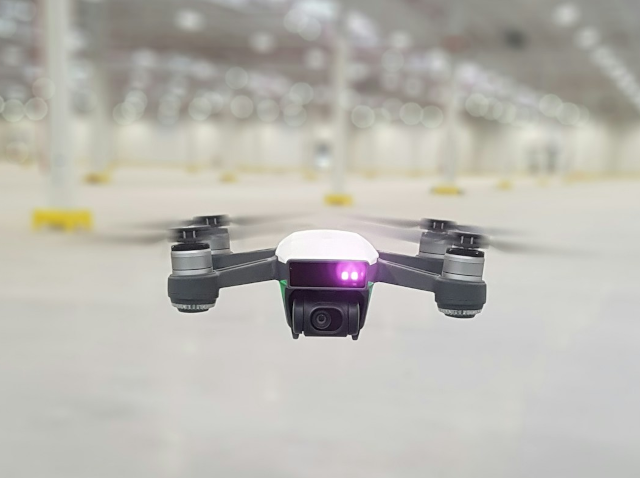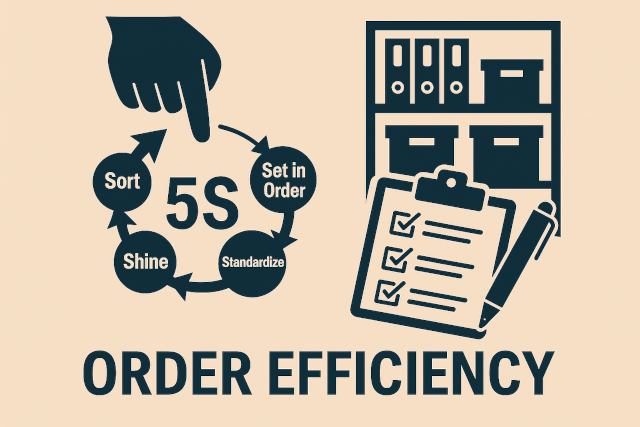Are Drones the Next Big Thing in Inventory Management?
The warehouse floor is changing fast.
Automation. AI. Robotics.
And now—drones.
What started as a niche experiment is gaining serious traction in inventory management. More and more distribution centers are testing or adopting drones to perform stock takes, aiming to reduce labor, increase accuracy, and boost operational speed.
But is this just another short-lived trend? Or are drones here to stay?
In this article, we’ll break down:
✅ How drone stock takes actually work
✅ The benefits (and real-world challenges)
✅ How AI is driving adoption
✅ Which industries are leading the way
✅ And whether this is the future—or just another warehouse fad
Why Inventory Management Needed a Disruption
Traditional stock takes are…well…painful.
You know the drill:
- Teams walking miles up and down aisles with RF scanners
- Climbing ladders to check high shelves
- Blocking aisles and disrupting daily operations
- Spending entire weekends counting stock to avoid weekday downtime
And despite all that effort?
You still end up with discrepancies, data lag, and human error.
Warehouses have tried to fix this with:
- Better Warehouse Management Systems (WMS)
- Cycle counting
- RFID tagging
- Even deploying temporary labor for wall-to-wall counts
But the core issue remains: people on foot = slow and error-prone processes.
How Drones Perform Inventory Stock Takes
Drone stock takes bring a completely different model to warehouse inventory control:
Airborne, automated, and data-driven.
Instead of sending people down every aisle with RF scanners, warehouses can now deploy drones to fly systematic routes—capturing inventory data from heights and angles that would otherwise require ladders, forklifts, or manual effort.
Here’s a detailed look at how it works:
Autonomous Flight Paths
Before each stock take, drones are programmed with a precise flight path tailored to the warehouse layout. These paths guide the drone aisle by aisle, rack by rack—ensuring full coverage without human intervention. Advanced flight control software factors in aisle width, racking height, and known obstructions, allowing the drone to navigate safely even in tightly packed environments. This pre-mapped routing eliminates missed sections and reduces the chance of double-counting.
Barcode and QR Code Scanning
As the drone flies its route, high-resolution cameras and onboard barcode scanners capture detailed images of rack locations and product labels. Whether your warehouse uses traditional barcodes, QR codes, or location-specific tags, the drone’s scanners can read them from a distance—even at the highest racking levels. This eliminates the need for pickers or auditors to physically reach awkward or elevated positions, drastically improving both speed and safety.
LiDAR and Depth Sensing
Some advanced drones go beyond visual scanning by incorporating LiDAR (Light Detection and Ranging) or stereo vision technology. These tools create a three-dimensional map of your storage areas, detecting not just what’s on the shelf but also identifying empty locations, misaligned pallets, or overstocked zones. This added layer of spatial awareness enables warehouses to track both SKU presence and storage density with remarkable accuracy.
AI-Powered Data Processing
Once the drone collects images and scan data, AI-driven software kicks in. Machine learning algorithms process the captured visuals, validate scanned counts, compare results against expected WMS records, and automatically flag any discrepancies. The AI can distinguish between similar-looking SKUs, filter out scan noise, and generate real-time variance reports—reducing the need for manual review and speeding up reconciliation.
WMS Integration
Captured inventory data doesn’t just sit in a report folder—it flows directly into your Warehouse Management System (WMS). API integrations or direct data feeds allow the drone’s findings to update inventory records in near real-time. This immediate data transfer closes the gap between physical counts and digital inventory visibility, giving warehouse managers and planners more confidence in the numbers they’re seeing.
Benefits: Why Warehouses Are Testing Drone Stock Takes
Adoption isn’t happening just for the tech novelty. The benefits are proving hard to ignore—especially for high-volume or high-bay distribution centers.
Speed and Frequency
Traditional stock takes can take hours, days, or even full weekends—requiring operational shutdowns or after-hours labor. Drones, by comparison, can cover the same number of locations in a fraction of the time. Some sites report completing wall-to-wall scans in just a few hours—making weekly or even daily cycle counts realistic where they weren’t before. This improved frequency gives planners better visibility for replenishment and order fulfillment decisions.
Accuracy and Traceability
Because drones capture high-resolution images of each location—combined with AI-driven validation—count accuracy improves dramatically. Missed slots, overlooked racks, and skipped SKUs become rare exceptions. Plus, the image archive from each flight creates a traceable audit trail, allowing teams to review footage if variances or disputes arise during reconciliation.
Safety
One of the most immediate wins for many warehouses is safety. Drones remove the need for people to work at height, eliminating ladder climbs and order picker trips just for inventory counts. This reduces the risk of falls and equipment-related injuries—an attractive benefit for warehouse managers focused on safety KPIs and OSHA compliance.
Reduced Labor Costs
By automating the stock-taking process, drones free up warehouse staff to focus on value-added activities like picking, packing, and replenishment. Some operations have reduced third-party labor reliance for annual counts altogether, reallocating those budget dollars toward fulfillment or process improvement initiatives.
Minimal Disruption
Drones can operate during low-traffic windows—such as early mornings, late evenings, or even during breaks between waves. Unlike traditional counts that require entire zones to be blocked off, drone stock takes minimize disruption to active picking and shipping processes. This makes them particularly useful in 24/7 or multi-shift environments where downtime is expensive.
Challenges: Why Drone Adoption Isn’t Universal Yet
It’s not all smooth flying.
Here’s what’s holding some warehouses back:
| Challenge | Details |
| Cost | Drones + software + WMS integration aren’t cheap (though costs are falling) |
| Environment | Not all warehouses have wide, open aisles or clear flight paths |
| Lighting | Poor warehouse lighting can affect camera performance |
| SKU Labeling | Unclear or inconsistent barcode placement reduces scan accuracy |
| Regulatory Compliance | Some countries have drone flight restrictions—even indoors |
| Maintenance | Drones require battery management, software updates, and occasional repairs |
AI: The Hidden Driver Behind Drone Adoption
Drones are just the hardware.
The real leap forward is happening behind the scenes—with AI and computer vision.
AI-driven software can now:
- Auto-detect barcode locations in complex environments
- Filter out false positives (e.g., duplicate scans)
- Compare scanned images with digital twin layouts
- Predict inventory gaps before manual intervention is needed
Some systems even provide heat maps of scan frequency and flag under-counted zones automatically.
Who’s Leading the Way?
Industries embracing drone stock takes first include:
- Automotive supply chains (large, high-density storage)
- 3PLs (Third-Party Logistics providers) (managing multiple SKUs for diverse clients)
- Retail distribution centers (where high inventory accuracy is critical for store replenishment)
- Industrial MRO warehouses (where safety concerns make aerial stock takes attractive)
Leading drone tech vendors include:
- Verity AG
- Gather AI
- Ware
- Doks Innovation
Each provider offers different blends of hardware, software, and AI analytics.
Is This a Fad… or the Future?
Let’s be real: Not every warehouse will be drone-ready next year.
But the direction is clear.
As AI matures and drone costs drop, more DCs will make the leap—especially high-volume sites where manual stock takes are eating up labor hours and causing operational downtime.
The early adopters are already seeing:
- Lower variance rates
- Faster cycle counts
- Better safety KPIs
And as drones integrate more seamlessly with WMS, ERP, and digital twin platforms, the barrier to entry will keep falling.
Your Next Step
If your warehouse struggles with inventory accuracy, stock count delays, or safety risks—drone technology deserves a serious look.
You don’t have to go full-scale on day one.
Start with a pilot in one zone. Measure speed, accuracy, and ROI.
And when the numbers land?
Decide if it’s a future worth flying toward.



